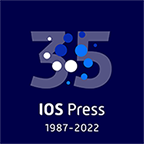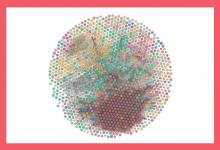by Carmel McNamara, IOS Press, Amsterdam, NL
Celebrating its 35th anniversary this year, IOS Press will share perspectives and insights into science publishing developments during a symposium on March 31, 2022. Prior to the event, this blog post highlights the latest research of one of the speakers in the technical session, Tobias Kuhn from Vrije Universiteit Amsterdam. Dr. Kuhn is the co-Editor-in-Chief of Data Science and guest editor of a new special issue, together with his colleague Cristina-Iulia Bucur, which aims to demonstrate for the first time that scientific articles can be formalized and therefore machine-interpretable – including the main scientific claims.
IOS Press was founded in 1987. Since then, developments within scholarly publishing have continued at a rapid pace, some anticipated by forward-thinking leaders in the field, while others have been unforeseen. Reflecting on the 30th anniversary celebration in 2017, the company’s founder and director Einar Fredriksson, PhD stated: “IOS Press is based on an academic publishing tradition commenced by learned societies and continued into the 20th century by specialized book-sellers and private sector publishers. With the arrival of computer networks and the Web in conjunction with a rapid growth of research and number of publications, and an increased interest among public sector institutions and funding agencies, our working environment is constantly changing.”
The company has a strong focus on innovation and is committed to investment in innovation. Current investigations include transparency and reproducibility, the incorporation of semantic entities for published metadata, and the development and application of proprietary software. Primary goals are to prioritize accessibility and strive for advancements in semantic publishing concentrating on the dissemination of scientific knowledge. As part of this initiative, the linked machine-readable metadata from all IOS Press journals and books are publicly available via LD Connect and users are invited to explore the data freely (read more in this blog post).
IOS Press is committed to addressing forward-looking topics, and these will be in evidence during the upcoming symposium to celebrate its 35th anniversary. Presenting during the technical session, Tobias Kuhn will share insights into nanopublications. He explains: "We need to find better ways to publish scientific findings to make them interpretable by software. I will show how we can let researchers formally represent and publish their own findings, and will report on our recent experiences in what could be the first steps in a new era of scientific publishing."

Semantic web technologies and nanopublications
The importance of published articles being interpretable and readable by machines is without doubt. However, there are still some areas of scholarly publishing that are clinging to the past, such as adhering to formats that are optimized for print use, such as PDF files, for all journal articles – even if it is an online-only journal. This topic was covered in a Labs blog post (see here), in which Cristina-Iulia Bucur first shared ideas for transforming scholarly articles into small, interlinked snippets of data. She states: “In our approach, we argue for a new system of scientific publishing that contains smaller, fine-grained, formal – machine-interpretable – representations of scientific knowledge that are linked together in a big knowledge network in a web-like fashion in a way that these publications do not need to be necessarily linked to a journal or a traditional publication and can be publication entities by themselves. Moreover, semantic technologies make possible the decomposition of traditional science articles into constituent machine-readable parts that are linked not only with one another, but also to other related fine-grained parts of knowledge on the Web following the linked data principles.”
Now, the Data Science special issue goes one step further. It introduces the brand new concept of “formalization papers” – which are nanopublication-based semantic publications whose novelty lies in the formalization of a previously published scientific claim. The editors Tobias Kuhn and Cristina-Iulia Bucur state that the aim of the special issue is to demonstrate for the first time that scientific articles can be formalized and therefore machine-interpretable – including the main scientific claims: “A formalization paper contributes a semantic formalization of one of the main claims of an already published scientific article. Its novelty therefore lies solely in the formalization of a claim, not the claim itself. The authors of such formalization papers consequently take credit for the way in which the formalization is done, but not for the original claim (unless that claim happens to come from the same authors).” Discover more about this topic via the extract of the special issue’s editorial listed in Box 1.







